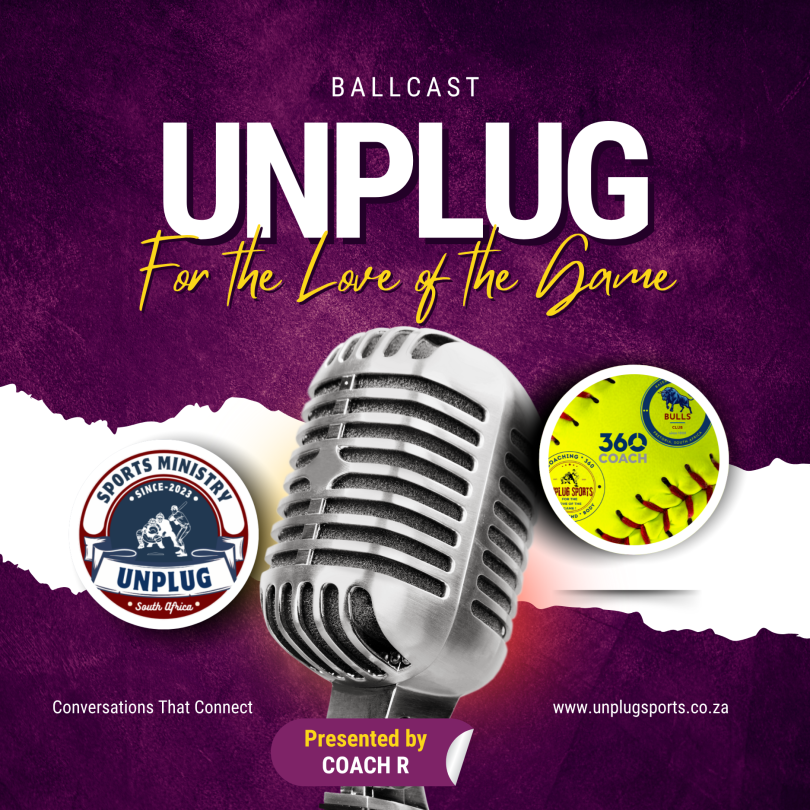Welcome back to the deep dive. If you’ve ever watched high-level softball and, you know, thought you had a handle on the rules, maybe prepare to have your mind blown a little. Today we are stepping onto the dirt, pulling back the curtain on the rule book used by the World Baseball Softball Confederation, the WBSC, specifically their fast-pitch umpire certification course material.
That’s right. Yeah. And we’re aiming to go, well, beyond just the basics. Our mission today is really to distill some of the surprising nuances and, frankly, the ice stakes penalties that govern professional fast pitch.
Because for a fan or even like a casual coach, the biggest knowledge gap often isn’t what the rules are exactly, but more the difference between an umpire’s immediate judgment call and those really crucial situations where the defense actually has the entire burden to initiate the ruling.
That procedural knowledge is just everything, isn’t it? If you don’t know the proper mechanic for asking for a call, you could genuinely cost your team the game. So we’re zeroing in on appeals, those administrative landmines and the substitution rules, some really harsh equipment penalties, and that kind of strategic concept of the delayed deadball.
Get ready to be informed. Okay, let’s start with what we can call the appeal burden, because this really is a counterintuitive foundation of the game, I think. We all accept that a strikeout or a force out is automatic, right?
The umpire sees it, calls the out, simple. But the appeal play, it shifts the responsibility completely onto the defense. Okay, let’s unpack this a bit. What plays specifically must the defense appeal?
Where does that burden lie? Primarily, there are two big ones. A runner missing a base. Okay. Or a runner leaving a base too soon on a cot fly ball. Right. You know, tagging up improperly. Right. And what’s fascinating here and kind of surprising is that the umpire cannot make a decision on these violations unless they are specifically asked to by a manager, coach, or even a player of the non-offending team.
Wow. They’re essentially like blind to the infraction until the defense forces their hand. So the defense absolutely has to be watching the base paths, watching those tag ups like a hawk. The clock starts ticking immediately then.
How do they actually execute that appeal? Is there a specific way? Yeah, they have options, but precision really matters. It could be a live ball appeal, which means tagging the runner or the base while the ball is still technically in play.
Okay. Or, and this is probably more common, often easier, a dead ball appeal. So call time, get the ball back to the infield, and then either verbally state the violation or tag the relevant base or runner.
But the critical part, and this seems almost designed to punish teams that aren’t paying attention, is the timing. If they hesitate, they just lose the out. The timing is absolutely ruthless. The appeal must be made before the next legal or illegal pitch is thrown.
Okay. But there’s this massive exception for the end of an inning, which can be chaotic. If the final out is made and the offense is leaving the field, the defense has to act immediately. The appeal has to happen before all defensive players cross the foul line into foul territory on their way back to the dugout or bench.
Wow. I actually found a case book example of that timing that puts like massive pressure on the third baseman or whoever is last off. Imagine the winning run scores, but the runner clearly missed third base.
The defense is celebrating, maybe jogging off. Yeah, happens all the time. If even one fielder is still standing in fair territory, the appeal can still be made. But the moment that last fielder steps across the foul line, it’s over.
The run stands. Game over, potentially. It’s the ultimate lesson in defensive discipline, really. They forfeit the right to the out just by failing to appeal in time. And that inability to appeal or the success of an appeal ties directly into when runs actually count.
Because even if that runner touched home plate, the run still might not score if the third out was made under certain specific conditions. Okay, so let’s follow that. If the defense does appeal that missed base in time and the appeal is upheld, it becomes the third out of the inning.
What happens to the runner who crossed the plate just before that appeal? That run is nullified. It doesn’t count. Why? Because the third out was achieved via what’s treated as a force-out. A successful appeal on a missed base functions like a force-out for scoring purposes.
Oh, okay. That’s probably the clearest and most common way you see a run wiped off the board, even if it physically crossed the plate before the appeal was finalized. So the defense, even if they physically concede the run crossing the plate, they must immediately appeal the missed base to enforce that force-out rule and cancel the score.
Precisely. And beyond the force-out appeal, a run is also nullified if the third-out results from the batter runner being put out before touching first base. Okay. Or if a preceding runner, someone ahead of the scoring runner on the base paths, is ruled out for the third out.
Got it. And finally, if a runner leaves their base before the pitch is released, the rule is absolute. You cannot score if a preceding runner is the third out. Let’s shift gears a bit from those procedural plays to more administrative scrutiny.
Because the rules governing gear and substitutes carry some absolutely merciless penalties. This is where the game really turns into a high-stakes compliance checklist. Oh, yeah. Let’s look at the illegal bat first.
This is definitely a zero tolerance area. The severity of the penalty for using an altered or illegal bat is designed to be an absolute deterrent, no question. Let’s say a batter uses one. Maybe it’s cracked or altered and rips the double.
The consequences are immediate and severe. The batter is automatically out. Out. The ball is dead, so no runners can advance. And crucially, the batter is immediately ejected from the game. Wow, ejected.
Not just the play wiped out, but gone from the game entirely. Gone. That’s not just removing the play, that’s removal from the premises. Wait, why is that penalty so aggressive out, dead ball, and ejection for something that, I don’t know, could conceivably be an honest mistake?
Like if a player grabbed the wrong warm-up bat, isn’t that a bit much? Well, the rulebook essentially treats it as gaining a significant competitive advantage, potentially intentionally. It’s viewed as a fundamental breach of fair play.
Okay. And the scrutiny isn’t just on the bat’s integrity. It extends to the visual aspects of other gear, too. Right. We’re talking about gloves and mitts now, which have specific limitations on color and design.
Correct. Gloves or mitts that have white, gray, or maybe yellow optic circles, basically anything that mimics the appearance of the optic yellow ball, are explicitly prohibited. And that’s for everyone.
Yes, all players, not just the pitcher. The idea is to maintain a clear contrast for the batter’s eye, and if you violate it, that equipment has to be removed from play immediately. Makes sense. And while we’re on gear, let’s quickly mention the catcher who has the longest mandatory checklist.
Mask, throat protector, helmet, shin guards, and a body protector. No getting around those. Absolutely non-negotiable for catchers. Now, let’s talk about the substitution minefield. This is where simple administrative errors don’t just cost runs, they can cost you key personnel.
Yeah, this seems tricky. The rule for re-entry is pretty specific. A starting player can leave the game and re-enter once, and critically, they must come back into their original spot in the batting order.
Okay, one re-entry, same spot, seems simple enough, but where does it go wrong? It goes wrong and hits the coaching staff hardest if that starting player attempts to re-enter a second time. That’s an illegal re-entry.
And the penalty. It’s stunningly severe. Both the illegally re-entering player and the head coach are immediately ejected. The head coach, too. Wow. Yes. That puts massive pressure on the staff. A head coach is ultimately deemed responsible for that lineup card for managing player eligibility.
They pay the price for that administrative lapse big time. And it gets complicated with unreported substitutes, too, right? Where the penalty depends entirely on when the opposing team appeals. That’s exactly right.
It’s all about the timing of the appeal. If the unreported substitute is already in the game, maybe made a play or a pitch has been thrown, and then the other team appeals, that player is simply declared ineligible.
They’re removed from the game, but they can usually stay on the bench, maybe coach. It’s a softer penalty, costs you the player, but doesn’t usually reverse the play. But crucially, if the opponent is sharp and appeals before the next pitch is thrown.
Ah, then the consequences are immediate and punitive, right on the scoreboard. If appealed in time, before that next pitch, the unreported substitute is called out, just straight up out. And, critically, all runners have to return to the bases they occupied at the time of the last pitch.
That timing difference completely changes the game situation. One is just losing a player, the other is an out and runners going back. Exactly. It absolutely encourages immediate, vigilant appeals from the defense.
You have to be watching that lineup card. Okay, let’s shift now to the pitching staff and the constant headache of the charge defensive conference. How many trips to the mound are allowed before there’s a penalty?
So in a standard seven-inning regulation game, the defense gets a maximum of three charged conferences. That’s it. Three total. Three total. Now, if the game goes into extra innings, they do get one additional conference per extra inning played.
And the cost of exceeding that limit, what happens if they take that fourth conference in, say, the seventh inning? The pitcher who is in the game during that fourth conference is immediately declared an illegal pitcher.
Illegal pitcher. Okay, what does that mean practically? Are they ejected, like the illegal reentry? No, not ejected. But they cannot pitch again for the remainder of that game. They must be removed from the pitching role.
They’re allowed to stay in the game and play another defensive position like first base or outfield, but their pitching duties are done. It’s a mandatory personnel change forced by the rule. Okay, that clarification, illegal pitcher versus ejection, is important, and it sets us up perfectly to talk about the illegal pitch itself, the actual mechanical fault.
Right, which often gets mistakenly conflated with the pitcher being declared illegal administratively. We’re talking here about mechanical faults like a crow hop, maybe leaning back too far, or perhaps throwing the ball after putting resin directly on it, things like that.
And the rule book calls this specific infraction a delayed deadball. What does that mean? This is a really unique mechanism, unlike a regular deadball where everything stops immediately. Yeah. The delayed deadball intentionally allows the play to continue and finish before the penalty is actually applied or chosen.
Why do that? It happens specifically so the offensive manager can make a strategic, often split-second choice based on the outcome of the play. Okay, so the umpire signals delayed dead ball because of the illegal pitch, but the pitch is thrown, the batter swings, maybe puts it in play, the play happens.
What choice does the offensive manager then have? If the batter does put the ball in play, hits it, somehow the manager gets two options. Option one, take the result of the play, whatever actually happened on the field stands.
Option two, decline the result of the play and take the award for the illegal pitch instead. That award is of a ball added to the batter’s count, and crucially, all runners currently on base advance one base.
Okay, walk us through a scenario there. Let’s say it was an illegal pitch. The batter hits a routine ground ball for an easy out at first. What’s the manager likely doing? In that case, the manager is almost certainly declining the result of the play, the ground out, and taking the award.
They essentially trade the out for a ball on the batter, and all their winners move up a base. That’s usually a massive advantage gained from the defense’s mistake, even if the pitch itself wasn’t wildly unhittable.
It makes sense. Conversely, if the batter absolutely crushes that illegal pitch for, say, a triple that drives in two runs. Then the manager happily takes the result of the play. The triple and the RBIs and the illegal pitch penalty is effectively ignored.
They choose whichever outcome benefits their team the most. Got it. Now, here’s a really crucial distinction you need to remember. If that illegal pitch actually hits the batter, there is no option given to the manager.
Automatic. The ball is immediately dead. The batter is awarded first base, and all runners advance one base. No choice involved there. That’s a huge point. The option only exists if the batter successfully puts the ball in play off the illegal pitch.
Exactly. It’s all about maximizing the opportunity that the defense’s error provides. Let’s try and wrap this up by clarifying the line between what an umpire just judges, which is final, and what a team can actually protest.
Because let’s be honest, managers love to argue about balls and strikes. Oh, absolutely. And the rule book is crystal clear on this. You cannot protest umpire judgment. Full stop. So things like whether a pitch was a strike or a ball, whether a runner was safe or out on a close play at the base, or whether a batted ball was fair or foul down the line.
Those are pure judgment calls, and they are not protestable. The umpire’s decision stands. So what can be protested effectively then, if not judgment? Misinterpretation or misapplication of a playing rule.
That’s the key. For instance, if an umpire failed to enforce the substitution rule correctly. Like the illegal reentry we talked about. Exactly. Or maybe failed to apply the correct base award after calling obstruction.
That kind of error, a rule application error, is protestable. But even then, the umpires themselves have some authority to correct their own mistakes on the spot. I like that term you used earlier, rectifying errors.
Tell us a bit more about that ability. Yeah, umpires often, after consulting with their partners on the field, can reverse a decision if they quickly realize their initial call, inadvertently placed a player in jeopardy, or put the defensive team at a distinct, unfair disadvantage because of the umpire’s mistake.
However, just like that appeal window we discussed, this correction window is extremely short. This kind of change is not possible after one legal or illegal pitch has been thrown following the play in question.
That next pitch is like the great eraser in the rulebook. It locks things in. Before we close out, let’s maybe highlight just a couple of plays that result in mandatory automatic outs where no appeal is needed from the defense, just to really reinforce that difference between the umpire’s required action and the defense’s procedural burden.
The intentional drop ball seems like a good one. It’s a critical rule, mainly designed to prevent defenses from intentionally setting up cheap double plays. How does it work? Okay, so if a batter hits a fly ball, and this includes a line drive or even a bun sometimes with less than two outs and a runner on first base or first and second, et cetera.
Right. And the fielder, in the umpire’s judgment, intentionally drops that catchable ball. The batter’s immediately out and the ball is dead. Runners return. The umpire must enforce that automatically.
No appeal needed. It stops the defense from gaming the forced play situation. Makes sense.




